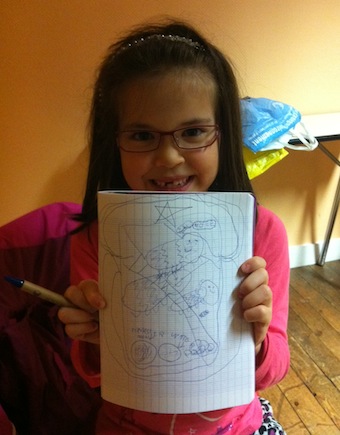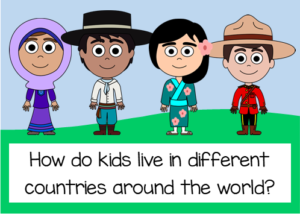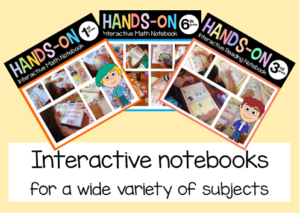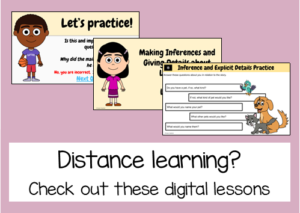 I’ve already stressed the importance of allowing kids to use their imagination to play, craft, and dream. I believe that allowing kids to “run wild” with their imaginations, creating and molding their environments in ways unique and interesting to them, will help them grow into successful and imaginative adults with a flair for creativity and entrepreneurship.
I’ve already stressed the importance of allowing kids to use their imagination to play, craft, and dream. I believe that allowing kids to “run wild” with their imaginations, creating and molding their environments in ways unique and interesting to them, will help them grow into successful and imaginative adults with a flair for creativity and entrepreneurship.
One reason that it’s important to get kids creating is that it can help lead to a habit of writing. By drawing, painting, coloring, or crafting in interesting and challenging ways, the cognitive tools will start to form that will allow children to get their thoughts down on paper in the form of stories, poetry, or prose. The craft of storytelling seems to be an innate human practice; there is something fascinatingly human about our ability to tell and pass down imaginative tales. Getting kids creating and using their imaginations will help them to learn and appreciate this skill.
If you’re interested in helping your child to take the first step toward creative writing, here’s a fun way you can go about it:
1. Have the child draw, paint, or sculpt a creative scene
Ask your child to create a scene on a piece of paper with paint or crayons. If he or she is quite young, you can use finger paints! The important part of this exercise is to help the child to create a scene… even if it is a fantastical scene that makes no sense! Explain to the child that the piece of paper is an environment, and that the things on the piece of paper – in the scene – are spatially together: flowers, trees, a tall house, a girl playing with a balloon, a boy walking his dog.
If you prefer, you can have your child sculpt the scene using molding clay, or you can even have the child set up the scene using a collection of toys or manipulatives.
2. Ask the child to describe what is happening in the scene
The child’s imagine has already kicked into gear during the creation of the scene; now it’s time to get that creativity out in the form of words. Ask the child what’s happening in the scene, and to describe the actions of the characters that have been drawn. This particular step helps move what’s happening in the scene from the visual to the textual – into words, phrases, sentences, and clarifying statements. Have the child describe the scene to you, pointing out details where necessary. Try not to interrupt or lead the child’s narrative in any specific way.
3. Ask the child questions about the scene
Ask your child pointed questions about the scene. What is the little boy doing? Does he notice the girl with the balloon? Do they know each other, and if so, how? When are they going to go back into the house? Do the flowers smell pretty? Get the child to imagine the life in all of the things that he or she has drawn into the scene, even beyond what is scribbled on the page. The scene becomes a miniature world of the child’s own creation, with whatever rules or interactions he or she chooses to add. It becomes a moment in time, with a past, a present, and a possible future.
By interacting with children in this manner about something that they’ve crafted, you can spark all kinds of creative processes. With continued use of exercises like this one, it will not be long before children can start telling creative stories straight out of their heads, with detailed descriptions, well thought-out characters, and interesting plots. Just remember to let your children’s imaginations go wherever they take them; don’t “correct” them if their scenes don’t fall into your perceived conception of reality. And while this goes without saying, I’m going to say it anyway – have fun with it!



